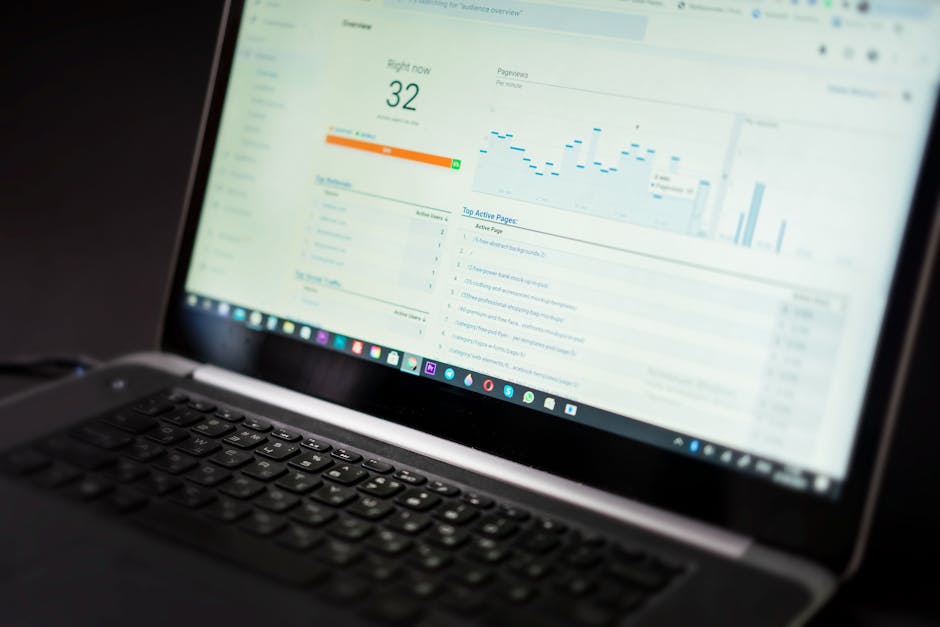Patient Registry Software Made Simple – No PhD Required!

Why Patient Registry Software is Changing Healthcare Research
Patient registry software is a specialized platform that collects, stores, and analyzes health data from patients with specific conditions or treatments. Here’s what you need to know:
Key Functions:
- Data Collection: Captures clinical data, patient-reported outcomes, and real-world evidence
- Analytics: Provides dashboards and insights for research and quality improvement
- Compliance: Ensures HIPAA, GDPR, and regulatory requirements are met
- Integration: Connects with EHRs, labs, and other healthcare systems
Main Types:
- Disease registries (track specific conditions)
- Product registries (monitor device/drug safety)
- Natural history studies (observe disease progression)
The patient registry software market is valued at $1.72 billion in 2024 and projected to reach $3.12 billion by 2029 – that’s a growth rate of 12.53% annually.
Why the explosive growth? Healthcare leaders are drowning in data silos. Patient information sits trapped in separate EHR systems, claims databases, and research platforms. Meanwhile, regulatory agencies demand real-world evidence for drug approvals. Pharmaceutical companies need post-market surveillance data. And healthcare providers want to improve patient outcomes through quality registries.
Traditional approaches – like spreadsheets or basic databases – simply can’t handle today’s complex requirements. Modern patient registry software offers federated analytics, AI-powered insights, and secure data sharing across institutions.
I’m Maria Chatzou Dunford, CEO of Lifebit, where we’ve spent over 10 years building cutting-edge patient registry software platforms that enable secure, federated data analysis for global healthcare organizations.
Patient Registry Software Explained: From Databases to Dynamic Insights
Patient registry software has evolved from simple databases storing patient demographics into sophisticated platforms that deliver real-time analytics, secure data sharing across institutions, and AI-powered insights that can spot patterns humans might miss entirely.
Here’s what makes modern registries fundamentally different from clinical trials: they’re observational research tools. While clinical trials are carefully controlled experiments where researchers dictate specific treatments, registries simply watch and learn. They capture how treatments actually work in the messy, complicated world of everyday healthcare – not just in pristine research environments.
This real-world approach has become incredibly valuable. Regulatory agencies want to see how drugs perform when patients forget doses, have multiple conditions, or don’t follow instructions perfectly. That’s the kind of authentic data that only registries can provide.
The TEFCA network now connects over 1,000 hospitals for secure health data exchange. Suddenly, a registry that once relied on a single institution’s data can tap into insights from across the entire healthcare system.
Modern patient registry software must speak multiple “languages” to play nicely with other systems. FHIR standards help different platforms communicate, while OMOP Common Data Model ensures that data collected in Boston can be meaningfully analyzed alongside data from Berlin.
Privacy and compliance add another layer of complexity. HIPAA regulations in the US and GDPR in Europe set strict rules about patient data protection. The most advanced platforms tackle this through security-by-design approaches – building privacy protection into every component rather than adding it as an afterthought.
Perhaps the most exciting development is federated analytics. Instead of moving sensitive patient data to a central location (which creates security risks and regulatory headaches), the analysis travels to where the data lives. Researchers can study distributed datasets without anyone’s sensitive information ever leaving its secure home.

Why patient registry software beats spreadsheets
The first casualty with spreadsheets is always data quality. Without built-in validation rules, spreadsheets become error magnets. Someone types “Male” in one row and “M” in another. Dates get entered in different formats. Critical fields get left blank.
Modern patient registry software prevents these headaches with real-time validation. Try to enter an impossible birth date? The system stops you. Forget a required field? You can’t move forward until it’s complete.
Automated data ingestion – perhaps the biggest game-changer of all. Instead of paying someone to manually type information from medical records, sophisticated platforms can automatically pull data from EHRs, lab systems, and other sources. This isn’t just about saving time – it’s about dramatically improving accuracy and completeness.
But here’s what really separates professional platforms from spreadsheets: audit trails. Regulatory compliance demands detailed records of who accessed what data, when changes were made, and why. Spreadsheets offer essentially no audit capabilities. Professional registry platforms maintain comprehensive logs of every single interaction with your data.
Patient registry software vs traditional EHR add-ons
Many healthcare organizations assume: “We already have an EHR system, so let’s just add a registry module.” Unfortunately, this logical-sounding approach often leads to frustration and abandoned projects.
The problem starts with scalability. EHR systems are designed for clinical workflows – scheduling appointments, writing prescriptions, billing insurance. When you suddenly ask them to analyze data from thousands of patients across multiple sites, they often buckle under the pressure. Dedicated patient registry software is architected from day one to handle massive datasets and complex analytics.
Real-time analytics capabilities tell a similar story. Your EHR might offer basic reports – how many patients visited last month, what diagnoses were most common. But registry platforms provide sophisticated dashboards, cohort analysis tools, and statistical packages that can identify trends, compare outcomes, and generate the detailed reports that regulators demand.
Perhaps most importantly, role-based access control works completely differently. EHR systems typically manage access at the patient or department level – either you can see someone’s record or you can’t. Registry platforms offer granular permissions that can restrict access to specific data fields, patient cohorts, or analysis functions.
The Many Faces of Registries: Types, Purposes & Stakeholders
Think of patient registry software as a Swiss Army knife for healthcare data – one tool, many purposes. The beauty lies in how different organizations can use the same underlying technology to solve vastly different challenges.
Disease registries represent the most familiar type, tracking patients who share a specific condition. Whether it’s diabetes, cancer, or a rare genetic disorder, these registries capture the full patient journey. They document natural disease progression, treatment patterns, and long-term outcomes that you simply can’t see in short-term clinical trials.
Product surveillance registries serve a completely different master – safety. Once a medical device or drug hits the market, regulatory agencies want to know how it performs in the real world. These post-market surveillance systems capture adverse events, unexpected side effects, and long-term effectiveness data that clinical trials might have missed.
Natural history studies take a hands-off approach, observing disease progression without any intervention. These studies prove especially valuable for rare diseases, where traditional clinical trials become impractical due to tiny patient populations.
Contact registries play matchmaker between patients and research opportunities. They maintain patient contact information and preferences, enabling researchers to quickly identify and recruit suitable participants for clinical trials.
The value-based care movement has sparked another registry evolution. Healthcare providers now use registries to track quality metrics, patient outcomes, and cost-effectiveness measures that directly impact reimbursement.
Registry Types by Purpose:
- Clinical quality improvement and benchmarking
- Post-market safety surveillance and pharmacovigilance
- Natural history studies and disease progression tracking
- Patient recruitment and clinical trial matching
- Comparative effectiveness research
- Rare disease research and patient advocacy
- Value-based care metrics and reimbursement
The stakeholder ecosystem around registries can get complex fast. Patients and caregivers provide the data and expect improved understanding of their conditions in return. Clinicians use registry insights to make better treatment decisions and benchmark their outcomes against peers.
Researchers treat registries as goldmines for hypothesis generation and validation. Industry partners – pharmaceutical and device companies – rely heavily on registry data for product development and regulatory submissions. Regulators increasingly demand real-world evidence from registries to inform policy decisions and ongoing safety monitoring.
Managing this diverse group requires diplomatic skills. Multi-stakeholder governance becomes critical when you have patients, providers, researchers, industry, and regulators all wanting different things from the same dataset. Successful registries establish clear data governance frameworks upfront, define roles and responsibilities, and implement transparent decision-making processes that balance everyone’s interests.
More info about What are Patient Registries and Why are They Important?
Scientific research on NIH registry directory
Critical Features & Compliance Checklist
Choosing the right patient registry software can feel overwhelming. After working with hundreds of healthcare organizations, we’ve learned that successful registries depend on four core requirements: interoperability, modularity, flexibility, and security. Miss any of these, and you’ll likely face expensive platform changes down the road.
Security isn’t optional—it’s everything. Your platform needs to be built with security from day one, not bolted on later. The best approach? Federated data analysis that lets researchers analyze datasets without actually moving sensitive patient information around.
Look for platforms that offer encryption at every step (when data sits still and when it moves), data pseudonymization to strip out personal identifiers, and role-based access controls that ensure only the right people can see the right information.
Interoperability standards might sound technical, but they’re actually about freedom. FHIR support means your registry can talk to other healthcare systems. OMOP Common Data Model ensures your research data can be understood and used by other institutions. Without these standards, you’re building an island that can’t connect to the mainland.
Cloud scalability isn’t just about handling more patients. As your registry grows, you’ll want to add new sites, run more complex analyses, and integrate additional data sources. Elastic cloud infrastructure grows with you and keeps costs reasonable through pay-as-you-go pricing.
Modular architecture is your insurance policy against changing requirements. Start with basic data collection, then add advanced analytics when you need them. Add patient engagement tools when you’re ready. The key is choosing a platform that won’t force you to start over when your needs evolve.
Low-code and no-code interfaces are game-changers for busy healthcare teams. Your clinical coordinators shouldn’t need programming skills to create forms or generate reports. The best platforms put powerful tools in the hands of the people who understand the data best—your clinical team.
Patient-reported outcomes have moved from “nice to have” to “must have.” Regulatory agencies and payers now recognize that patient perspectives are crucial for understanding treatment effectiveness. Your platform should make it easy for patients to share their experiences through mobile-friendly surveys and automated reminders.
Analytics and dashboards should feel intuitive, not intimidating. Real-time monitoring helps you spot trends early. Cohort building tools let you compare different patient groups. Benchmarking capabilities show how your outcomes stack up. And customizable reporting ensures you can meet whatever regulatory requirements come your way.
Audit trails might seem boring, but they’re your lifeline during regulatory audits. Every data access, every modification, every user action should be automatically logged. When regulators ask questions, you’ll have comprehensive answers ready.
| Feature Category | Essential Features | Nice-to-Have Features |
|---|---|---|
| Security | HIPAA/GDPR compliance, encryption, audit trails | Federated analytics, blockchain validation |
| Integration | FHIR/OMOP support, EHR connectivity | API marketplace, custom connectors |
| Analytics | Real-time dashboards, cohort analysis | AI/ML algorithms, predictive modeling |
| User Experience | Role-based access, mobile optimization | No-code configuration, white-label portals |
| Scalability | Cloud infrastructure, multi-site support | Auto-scaling, global data centers |
The difference between essential and nice-to-have features often comes down to timing and budget. Start with the essentials, but choose a platform that can grow into the advanced features when you’re ready.
Compliance reporting capabilities ensure you’re always audit-ready. Your platform should generate the reports regulators expect while maintaining detailed records of data governance activities.
More info about The Four Key Requirements of Patient Registry Software
Scientific research on FDA patient-focused data guidance
From Data to Action: Research, Quality Improvement & Value-Based Care
Here’s where patient registry software truly shines – changing raw data into insights that actually change patient lives. It’s one thing to collect information; it’s another to turn that information into better treatments, improved care, and real-world evidence that regulators and payers trust.
Real-world data tells the story that clinical trials can’t. While controlled studies show us what happens in perfect conditions, registries reveal how treatments work in the messy reality of everyday healthcare. A diabetes drug might perform beautifully in a clinical trial, but how does it work for a 75-year-old patient with kidney disease who sometimes forgets to take their medication? That’s where registry data becomes invaluable.
The FDA has caught on to this reality. They’re now accepting real-world evidence from registries to support drug approvals and label changes. This shift represents a fundamental change in how we think about medical evidence – moving from “it worked in the lab” to “it works in the real world.”

One of the most exciting developments is using registries as external control arms for clinical trials. This is particularly powerful for rare diseases where finding enough patients for traditional placebo-controlled studies is nearly impossible. Instead of asking families to accept a 50% chance their child gets a placebo, researchers can compare new treatments against historical data from registries.
AI-driven insights are turning registries from backward-looking reports into forward-thinking prediction engines. Modern platforms can spot patterns that human analysts might miss – identifying which patients are likely to respond to specific treatments or flagging potential safety issues before they become serious problems.
The integration of patient-reported outcomes and wearable device data creates a much richer picture of patient health. Your fitness tracker knows if you’re sleeping poorly or your activity levels have dropped. Your glucose monitor tracks patterns your doctor only sees during quarterly visits. When this continuous data flows into registries, we get a 360-degree view of how treatments affect daily life.
Quality improvement becomes much more targeted with registry insights. Instead of guessing what works, healthcare providers can see exactly how their outcomes compare to national benchmarks. The Serious Illness Care Navigator team at Corewell Health used registry-driven workflows to increase advance care plans from 450 to 1,500 per month.
Value-based care contracts increasingly depend on registry data to prove that treatments deliver both clinical benefits and economic value. Payers want to see that expensive new therapies actually reduce hospital readmissions, emergency department visits, and long-term complications.
Rare disease research has been transformed by international registries. When there are only a few hundred patients with a condition worldwide, single-site studies are impossible. But global registries can pool data from patients across continents, creating datasets large enough for meaningful analysis.
Modern EHR integration goes far beyond simple data export. Advanced registry platforms create bidirectional communication – pulling relevant clinical data automatically while pushing registry insights back into doctors’ workflows.
Cloud federation technologies solve one of the biggest challenges in multi-site research: how to analyze combined datasets without moving sensitive patient information. Researchers can run analyses across multiple institutions while each organization maintains complete control over its own data.
The bigger picture is even more exciting. Registry networks are creating learning health systems where clinical practice continuously improves based on real-world evidence. Every patient interaction becomes a data point. Every treatment outcome becomes a lesson. Every registry becomes part of a larger effort to make healthcare more effective, more personalized, and more human.
More info about Four Key Benefits of Using Patient Registries to Progress Rare Disease Insights
Implementation Roadmap, Best Practices & FAQs
Building a successful patient registry software implementation isn’t just about choosing the right technology – it’s about creating a sustainable ecosystem that serves all stakeholders while delivering meaningful insights. After working with healthcare organizations worldwide, I’ve seen what separates thriving registries from those that struggle to gain traction.
The journey starts with solid governance frameworks that define who makes decisions, how conflicts get resolved, and what success looks like. This might sound bureaucratic, but registries without clear governance often become battlegrounds between competing interests. Academic researchers want comprehensive data collection, clinicians need streamlined workflows, and administrators worry about costs.
Funding sustainability deserves serious attention from day one. I’ve watched too many promising registries launch with enthusiasm and initial funding, only to wither when grant money runs out or sponsors lose interest. Plan for the long haul, not just the launch phase.
Stakeholder engagement requires understanding what motivates each group involved in your registry. Patients want to contribute to research that might help others like them. Clinicians need workflows that improve rather than burden patient care. Researchers seek high-quality data that enables meaningful analysis. The most successful implementations address these diverse needs rather than forcing everyone to adapt to a one-size-fits-all approach.
Data harmonization might be the least glamorous part of registry implementation, but it’s absolutely critical. Adopting standards like the OMOP Common Data Model early in your planning process saves enormous effort later. Start with standards from the beginning, even if it seems like extra work initially.
Phased rollout strategies reduce risk while building confidence among stakeholders. Begin with a carefully selected pilot group that includes enthusiastic early adopters. Use this initial phase to identify workflow issues, refine data collection processes, and demonstrate value before expanding to additional sites or patient populations.
Change management often determines success more than technical capabilities. Healthcare organizations have established routines that resist disruption, even when the change promises benefits. Successful implementations invest heavily in training, provide ongoing support, and celebrate early wins to build momentum.
Vendor selection should evaluate both current capabilities and future roadmap. Look for partners with deep experience in your therapeutic area, proven security credentials, and demonstrated ability to scale with your needs. Consider the total cost of ownership, including implementation services, training, and ongoing support.

More info about Challenges Facing Patient Registries in the US
Frequently Asked Questions about Patient Registry Software
How long does it take to launch a registry?
Simple registries with straightforward data collection can launch within 3-6 months if you have clear requirements and engaged stakeholders. Complex multi-site registries with extensive regulatory requirements typically take 12-18 months or longer.
The secret is embracing a phased pilot approach that delivers value quickly while building toward full functionality. Start with core data collection and basic reporting capabilities – your rapid MVP (Minimum Viable Product). This strategy maintains stakeholder enthusiasm while reducing implementation risk.
Don’t let perfect become the enemy of good. Launch with essential functionality and add advanced features in subsequent phases.
How is patient data kept private?
Data privacy in modern patient registry software relies on multiple layers of protection working together. Encryption forms the foundation, protecting data both in storage and during transmission using industry-standard protocols.
Pseudonymization removes direct patient identifiers while preserving the ability to link records for longitudinal analysis. This technique allows researchers to analyze patient journeys over time without accessing names, addresses, or other personally identifiable information.
Federated analysis represents the most advanced privacy protection available today. Instead of centralizing sensitive data in one location, federated platforms bring analytics to wherever data lives. Researchers can analyze distributed datasets across multiple institutions without patient information ever leaving its original secure environment.
Additional safeguards include role-based access controls that ensure users only see data relevant to their responsibilities, comprehensive audit trails that track every data access and modification, and automated data retention policies that ensure information is only kept as long as necessary.
What budget should we plan for maintenance?
Registry maintenance costs include several ongoing components. Cloud infrastructure costs typically represent the largest expense, scaling with your data volume and user activity. Modern platforms offer elastic pricing that adjusts automatically based on usage, but plan for growth as your registry expands.
Support contracts ensure access to technical assistance, software updates, and critical security patches. These contracts typically cost 15-25% of initial licensing fees annually but provide essential protection against technical issues that could disrupt registry operations.
Scaling considerations become important as registries prove their value and attract additional users, data sources, or analytical requirements. Budget for platform upgrades or additional licensing based on your growth projections.
Don’t forget indirect costs like staff training, data management, and governance activities. Plan for approximately 20-30% of your initial implementation budget annually for ongoing operations and growth.
Conclusion
The healthcare landscape is changing rapidly, and patient registry software sits at the heart of this change. We’re witnessing three major shifts that are reshaping how medical research happens: artificial intelligence becoming smarter, federated analytics breaking down data silos, and cloud technologies making everything more accessible.
Just a few years ago, analyzing patient data meant months of paperwork, data transfers, and compliance headaches. Today’s AI-powered platforms can spot patterns in real-time, predict which treatments might work best for specific patients, and even catch safety issues before they become serious problems.
Federated analytics might sound technical, but the concept is beautifully simple. Instead of moving sensitive patient data around the world (with all the privacy risks that entails), we bring the analysis to wherever the data lives. Hospitals in Boston can collaborate with researchers in Berlin without a single patient record leaving its home institution.
Cloud-native platforms have democratized access to powerful computing resources. Small research teams can now access the same analytical firepower that once required massive IT departments and million-dollar budgets. The technology scales automatically as your registry grows, and you only pay for what you actually use.
At Lifebit, we’ve built our federated AI platform around these exact principles. Our Trusted Research Environment, Trusted Data Lakehouse, and Real-time Evidence & Analytics Layer work together to deliver insights that were previously impossible to achieve. We’re not just talking about better data collection – we’re enabling real-time evidence generation that can change patient care as it happens.
The organizations succeeding in this new world understand that patient registry software isn’t just about storing information anymore. It’s about creating learning health systems where every patient interaction contributes to better care for everyone. Each data point becomes part of a larger story that helps doctors make better decisions, researchers develop better treatments, and patients get better outcomes.
Whether you’re just starting to explore patient registries or looking to upgrade from spreadsheets and legacy systems, the key is choosing platforms that can grow with your ambitions. The technology exists today to securely analyze global datasets, generate real-world evidence, and accelerate medical breakthroughs – all while keeping patient privacy at the forefront.
The future of healthcare research is federated, intelligent, and surprisingly human-centered. And honestly? That future is already here.


One thought on “Patient Registry Software Made Simple – No PhD Required!”
Comments are closed.